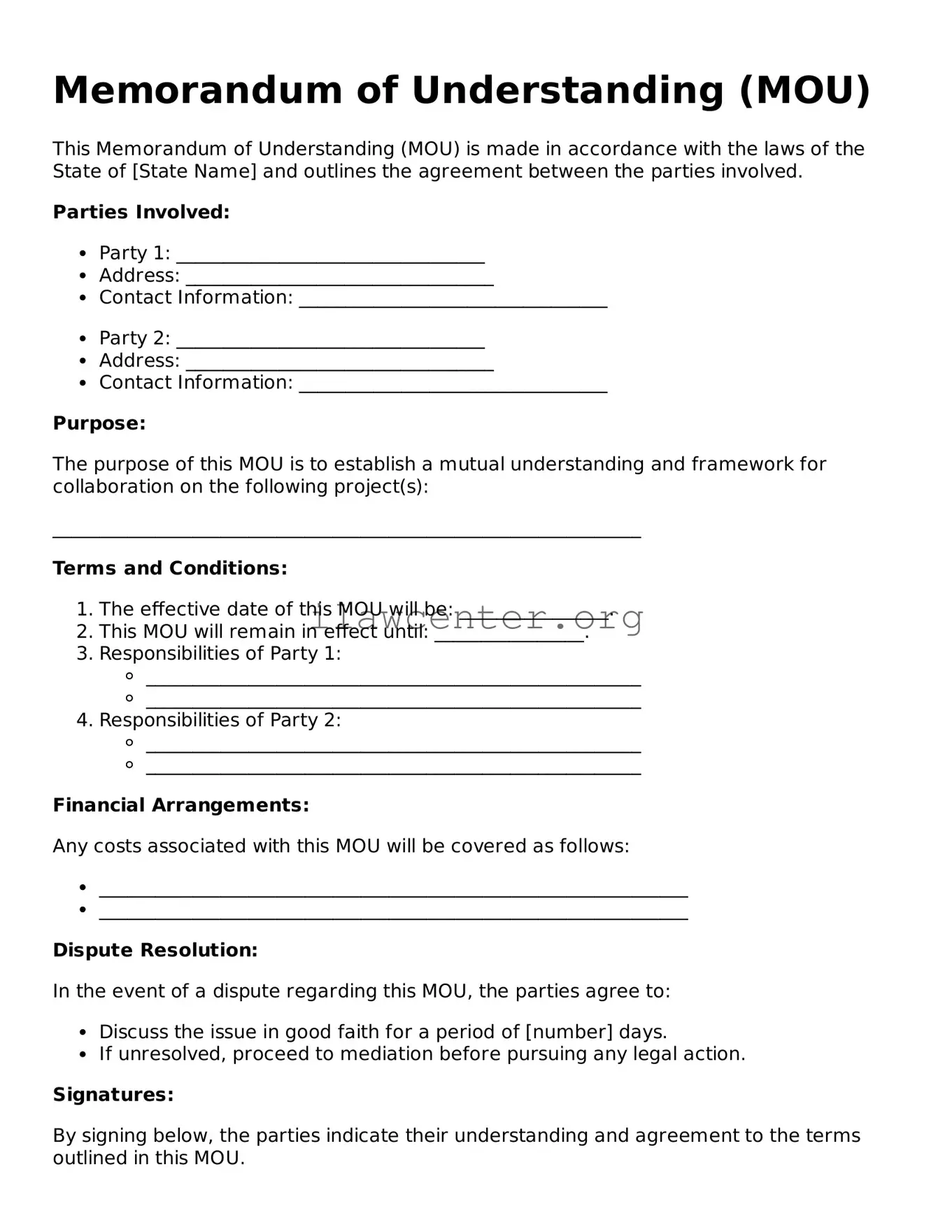What is a Memorandum of Understanding (MOU)?
A Memorandum of Understanding, or MOU, is a formal agreement between two or more parties. It outlines the terms and details of the collaboration, including roles and responsibilities. While it is not legally binding, it signifies a mutual understanding and commitment to work together toward common goals.
Is an MOU legally binding?
An MOU is generally not considered legally binding like a contract. However, it can express the intent of the parties to enter into a future agreement and can hold some legal weight if it contains specific binding provisions. Ensure clarity in the document about which aspects are intended to be binding.
Who typically uses MOUs?
MOs are commonly used by organizations, government agencies, non-profits, and businesses. They serve as a tool for parties who wish to collaborate on projects, share resources, or establish partnerships, providing a clear framework for cooperation.
What should be included in an MOU?
An effective MOU should include the names of the parties involved, the purpose of the agreement, specific responsibilities, timelines, funding obligations, and any confidentiality provisions. Clearly outlining these elements will help prevent misunderstandings later.
How long does an MOU last?
The duration of an MOU can vary. Some may last until a project is completed, while others may specify a set timeframe. It’s important to include termination clauses in case the partnership needs to end sooner than expected.
Can an MOU be modified?
Yes, MOUs can be modified. Any changes should be documented in writing and agreed upon by all parties involved to ensure clarity and maintain mutual understanding.
What is the process for creating an MOU?
Creating an MOU typically involves drafting the agreement, discussing it with all parties, and making any necessary revisions. Once everyone agrees on the content, all parties should sign the document to indicate their commitment.
Do I need a lawyer to draft an MOU?
While it’s not required to have a lawyer draft an MOU, consulting with one can be beneficial, especially if the terms are complex or if the agreement involves significant assets or liabilities. A lawyer can ensure that the MOU addresses all necessary legal aspects.
What happens if one party does not uphold their end of the MOU?
If one party fails to fulfill their obligations under an MOU, the other party may address the issue through discussions. Depending on the circumstances, it may lead to renegotiation of terms or, in some cases, the pursuit of legal remedies, especially if the MOU contained binding provisions.
Where can I find a template for an MOU?
Templates for MOUs can be found online through legal resource websites, nonprofit organizations, or governmental agencies. While it's useful to have a template, tailor it to fit the specific needs of your agreement to ensure it accurately reflects the intentions of all parties involved.
